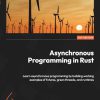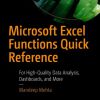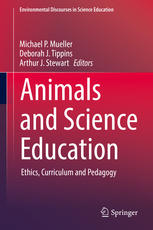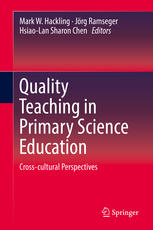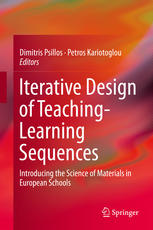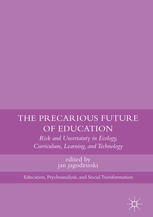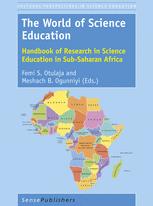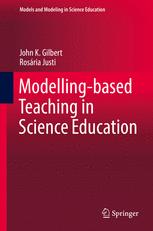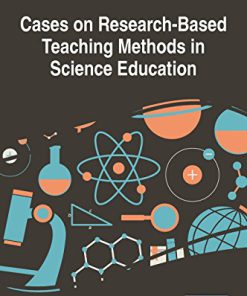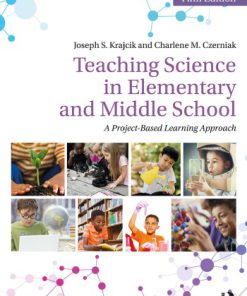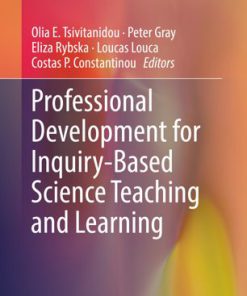Crossing the Border of the Traditional Science Curriculum Innovative Teaching and Learning in Basic Science Education 1st Edition by Maurício Pietrocola, Ivã Gurgel 9463510417 9789463510417
$50.00 Original price was: $50.00.$25.00Current price is: $25.00.
Crossing the Border of the Traditional Science Curriculum Innovative Teaching and Learning in Basic Science Education 1st Edition by Maurício Pietrocola, Ivã Gurgel – Ebook PDF Instant Download/DeliveryISBN: 9463510417, 9789463510417
Full download Crossing the Border of the Traditional Science Curriculum Innovative Teaching and Learning in Basic Science Education 1st Edition after payment.
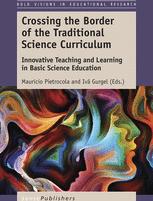
Product details:
ISBN-10 : 9463510417
ISBN-13 : 9789463510417
Author: Maurício Pietrocola, Ivã Gurgel
Nations worldwide consider education an important tool for economic and social development, and the use of innovative strategies to prepare students for the acquisition of knowledge and skills is currently considered the most effective strategy for nurturing engaged, informed learners. In the last decade especially, European countries have promoted a series of revisions to their curricula and in the ways teachers are trained to put these into practice. Updating curriculum contents, pedagogical facilities (for example, computers in schools), and teaching and learning strategies should be seen as a routine task, since social and pedagogical needs change over time. Nevertheless, educational institutions and actors (educational departments, schools, teachers, and even students) normally tend to be committed to traditional practices. As a result of this resistance to change within educational systems, implementing educational innovation is a big challenge. The authors of the present volume have been involved with curriculum development since 2003. This work is an opportunity to present the results of more than a decade of research into experimental, inventive approaches to science education. Most chapters concern innovative strategies for the teaching and learning of new contents, as well as methods for learning to teach them at the pre-university school level. The research is focused on understanding the pedagogical issues around the process of innovation, and the findings are grounded in analyses of the limits and possibilities of teachers’ and students’ practices in schools.
Crossing the Border of the Traditional Science Curriculum Innovative Teaching and Learning in Basic Science Education 1st Table of contents:
1. CURRICULAR INNOVATION AND DIDACTIC-PEDAGOGICAL RISK MANAGEMENT: Teaching Modern and Contemporary
INTRODUCTION
RESEARCH IN THE CONTEXT OF INNOVATION
MANAGEMENT OF RIISK TAKEN
I. The perception that there is a tradition in physics education
II. The perception that something must change within the classroom
III. The perception that teachers must accept the risk of failure
IV. The willingness to participate and find support in an innovative group
CONCLUSION
NOTES
REFERENCES
2. ELEMENTARY PARTICLE PHYSICS FOR HIGH SCHOOLS
INTRODUCTION
THE CONTRIBUTIONS OF ELEMENTARY PARTICLE PHYSICS TO HIGH SCHOOL EDUCATION
TRANSFORMING KNOWLEDGE TO THE CLASSROOM: THE DIDACTIC TRANSPOSITION THEORY
PROPOSAL OF ACTIVITIES
OBSTACLES AND CHALLENGES
FINAL CONSIDERATIONS
NOTES
REFERENCES
3. PARTICLE ACCELERATORS AND DIDACTIC OBSTACLESA: Teaching and Learning Experience in São Paulo an
INTRODUCTION
A NEW SCIENCE OF PHENOMENOTECHNICAL KNOWLEDGE
THE COURSE ON PARTICLE ACCELERATORS
THE IMPLEMENTATION OF THE COURSE AND SOME LEARNING OBSTACLES
Situation 1 – Scarcely Adequate Images and Texts
Situation 2 – Inadequacy in the Lack of Metaphor Deconstruction
Situation 3 – Emphasis on Mass Concentration in the Nuclear Atom
FINAL IDEAS
NOTES
REFERENCES
4. A TEACHING-LEARNING SEQUENCE ON THECONCEPT OF MASS AND REQUIRED SKILLS FOR TEACHING RELATIVITY
INTRODUCTION
MOTIVATION FOR THE CONCEPT OF MASS THEME
DESIGN-BASED RESEARCH AND TEACHING-LEARNING SEQUENCES
OUR TEACHING-LEARNING SEQUENCE ON THE CONCEPT OF MASS
Design Principles
Objectives of the Course
The Course Plan
General Features of the Course
DIDACTIC RESULTS
Recognition of the Functionality of Prerequisites
Knowing How to Re-Signify Physical Concepts
Knowing How to Interpret Equations
Familiarity with Abstract Concepts
Knowing How to Transform Questions
NOTES
REFERENCES
5. SCIENCE STAND: Crossing Borders between Sciences, Arts, and Humanities in a Decentralized Scienc
BACKGROUND AND PRINCIPLES
THE SCIENCE STAND
CONCLUSIONS AND RESEARCH DEVELOPMENTS
NOTES
REFERENCES
6. COMPUTER SIMULATIONS AND STUDENTS’ DIFFICULTIES IN READING VISUAL REPRESENTATIONS IN SCIENCE
INTRODUCTION AND RATIONALE
Computer Simulations in Science Education
Visualization of Simulations and Student Interpretations of Depicted Content
Students’ Explanations of the Scientific Content of Simulations
RESEARCH OBJECTIVES AND METHODOLOGICAL APPROACH
ANALYSIS OF DATA AND RESULTS
Analysis of Students’ Explanations Regarding the “Friction” Simulation
Analysis of Students’ Explanations Regarding the “Faraday’s Law” Simulation
Summary of Students’ Alternative Explanations
Discussion of Students’ Underlying Reasoning Mechanisms
CONCLUSIONS AND IMPLICATIONS
ACKNOWLEDGEMENT
REFERENCES
7. PRAXEOLOGY AND THE USE OF EDUCATIONAL ROBOTICS IN THE TEACHING OF PHYSICS
INTRODUCTION
THE IDEA OF PRAXEOLOGY
The Practical-Technical Block (Praxis)
The Technological-Theoretical Block (Logos)
EDUCATIONAL ROBOTICS FROM A PRAXEOLOGICAL PERSPECTIVE
PRAXEOLOGICAL VERISIMILITUDE AND EDUCATIONAL ROBOTICS IN TEACHING PHYSICS
FINAL THOUGHTS
REFERENCES
8. TEACHING SOLAR PHYSICS IN A PARTNERSHIP BETWEEN FORMAL AND NON-FORMAL EDUCATION
INTRODUCTION
SOLAR PHYSICS AND THE DIETRICH SCHIEL OBSERVATORY
REFLECTIVE CYCLES AS A COLLABORATIVE METHODOLOGY FOR THE DEVELOPMENT OF TEACHING-LEARNING SEQUENCES
TLSs and Their Phases
The TLS and its Design
FINAL COMMENTS
ACKNOWLEDGEMENTS
NOTE
REFERENCES
9. CURRICULAR INNOVATION IN MODERN AND CONTEMPORARY PHYSICS IN ONGOING TRAINING COURSES: Professiona
INTRODUCTION
Professional Development
Methodology
Discussion of the Results
i) Instructor Teachers:
ii) Teachers Who Participated in Courses
iii) Difficulties of Instructors and Course Participants
CONCLUSION
ACKNOWLEDGEMENTS
NOTES
REFERENCES
10. A GAME DESIGNED TO TACKL ECONTROVERSIES ABOUT THE NATURE OF SCIENCE: Debates Regarding Science
INTRODUCTION
RELATIVIST CONTROVERSIES AND THE CONTRIBUTIONS OF SOCIAL HISTORY TO SCIENCE EDUCATION
THE COSMIC GAME
First phase:
Second phase:
Third phase:
DESCRIPTION OF THE ACTIVITIES CONDUCTED IN HIGH SCHOOL PHYSICS CLASSES
STUDENTS’ CONCEPTIONS ABOUT SCIENCE
FINAL REMARKS
NOTES
REFERENCES
11. A PROPOSAL FOR OVERCOMING OBSTACLES TO TEACHING NATURAL SCIENCE: Evaluating a History of High Sc
INTRODUCTION
HISTORY AND EPISTEMOLOGY IN THE SCHOOL ENVIRONMENT: CHALLENGES AND DILEMMAS
Theoretical Analysis Comparing Historiographical and Didactic Requisites
OBSTACLES FACED IN THE CONSTRUCTION OF A HISTORY OF OPTICS COURSE
PROPOSAL FOR COPING WITH OBSTACLES
USING THE PARAMETERS: THE HISTORY OF COSMOLOGY IN HIGH SCHOOLS
FINAL CONSIDERATIONS
NOTES
REFERENCES
12. THE ROLE OF NARRATIVE THINKING IN LEARNING SCIENTIFIC CONCEPTS
INTRODUCTION
NARRATIVE AS A WAY OF THINKING
NARRATIVES IN A PHYSICS CLASS
Student 1
Student 2
Student 3
Student 4
Student 5
FINAL CONSIDERATIONS
NOTES
REFERENCES
13. INTERWOVEN THOUGHTS: Rethinking the Current Picture of Physics Knowledge
ASSUMPTIONS OF CURRICULUM PROPOSALS
LANGUAGE: AN AGREEMENT BETWEEN FORMS OF LIFE
THERAPY FOR THE PICTURE OF PHYSICS
THE RELATIONSHIP BETWEEN PHYSICS THINKING AND PHILOSOPHICAL THINKING
TEACHING A NEW STYLE OF THINKING: USING NORMATIVITY TO TEACH NEWTONIAN MECHANICS
FINAL CONSIDERATIONS
NOTES
REFERENCES
People also search for Crossing the Border of the Traditional Science Curriculum Innovative Teaching and Learning in Basic Science Education 1st:
crossing borders textbook pdf
crossing borders international studies for the 21st century 4th edition
crossing borders international studies for the 21st century
crossing borders international studies for the 21st century pdf
crossing borders textbook pdf free
Tags: Crossing, Traditional Science, Curriculum Innovative, Basic Science Education, Maurício Pietrocola, Ivã Gurgel
You may also like…
Education Studies & Teaching - School Education & Teaching
Animals and Science Education Ethics Curriculum and Pedagogy 1st Edition Michael P. Mueller
Education Studies & Teaching
Education Studies & Teaching
Education Studies & Teaching
Education Studies & Teaching
Education Studies & Teaching
Education Studies & Teaching - School Education & Teaching Psychology - Pedagogy
Cases on Research Based Teaching Methods in Science Education 1st Edition Eugene De Silva
Education Studies & Teaching - School Education & Teaching


